We flew with Aer Lingus on a direct flight, and everything went just as expected… though, when it comes to airports, “just as expected” usually comes with a touch of uncertainty: delays, suitcases wandering around the world, or a gate change at the last minute. And to be clear: we’re not airline haters—as travellers, we know mistakes happen.
One important detail: when booking, we chose to fly with just carry-on luggage for the four of us. Funny enough, we had to check all that hand luggage anyway, although there was no extra cost. In practice, it was just like checking regular suitcases. So, if you’re travelling as a family, paying €70 per person each way for a large suitcase really doesn’t make sense, when you can check four small ones for free. For a 3- or 4-day trip, it’s more than enough… unless you travel like a Kardashian and need to bring half your wardrobe.
We chose to take the Aircoach bus and bought round-trip tickets for the four of us for about €12 each, totaling roughly €48.
The big debate… and as always, everyone has their own preferences—and budget! Overall, hotels in Dublin felt expensive compared to other cities, and the price difference with Airbnb was almost non-existent.
That said, for family accommodation in Dublin, we chose to stay in a hotel. In fact, whenever possible, we pick the Premier Inn chain.
We stayed at the Premier Inn Dublin City Centre (Gloucester Street South), and here’s our total budget:
The rooms for four people are compact, especially the closet space, but for a stay up to four days, it’s easy to adapt. More than enough.
We really liked the breakfast: fresh fruit, the classic beans, fried eggs, bacon, dairy, cereals… and something sweet to finish off.
Plus, the hotel is just a 10-minute walk from Dublin city centre, so location-wise, it was a great choice too.
Traveling with family requires some preparation, especially when you’re with young children. In our case, we traveled with teenagers, which allows for a bit more flexibility, but it’s still important to keep some details in mind. Here are several tips that helped us make everything easier and more enjoyable:
We usually carry metal bottles that keep water cold well, and always a good raincoat or ponchos that cover down to the ankles. Super handy when rain shows up out of nowhere!
Our first day started early with a hearty breakfast at the hotel, because at 10:30 a.m. we had a reservation to visit Kilmainham Gaol, one of the most impactful visits of our trip. If you’re planning your own visit, here’s a crucial tip: tickets for this prison are very hard to get, especially during peak season. They were sold out for days, but we learned that every morning around 9:30 a.m. some tickets are released on their website. We got lucky and managed to secure four just in time.
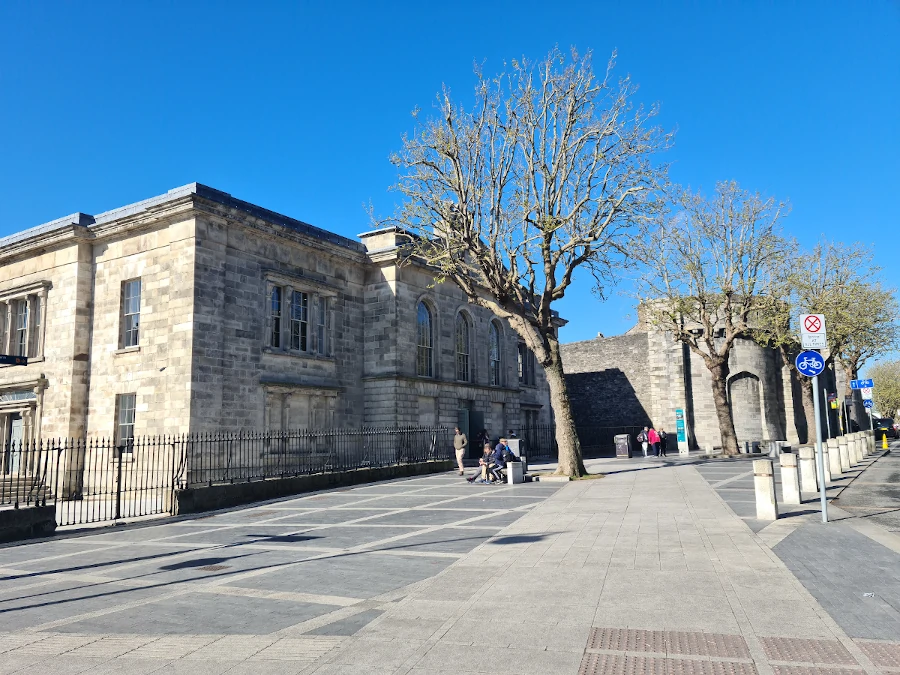
From our hotel, the Premier Inn Dublin City Centre – Gloucester Street South, to Kilmainham Gaol is about 5 km and a 23-minute drive. It was early, so we chose Uber, and despite some traffic, we arrived without any issues. The trip cost around €20.
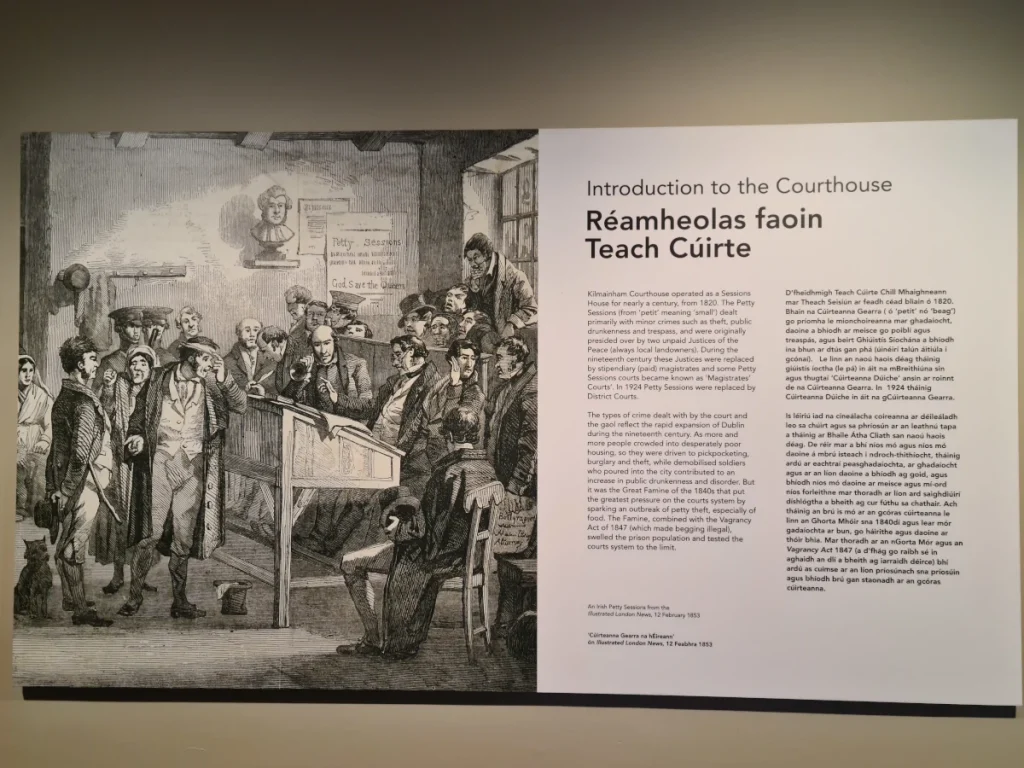
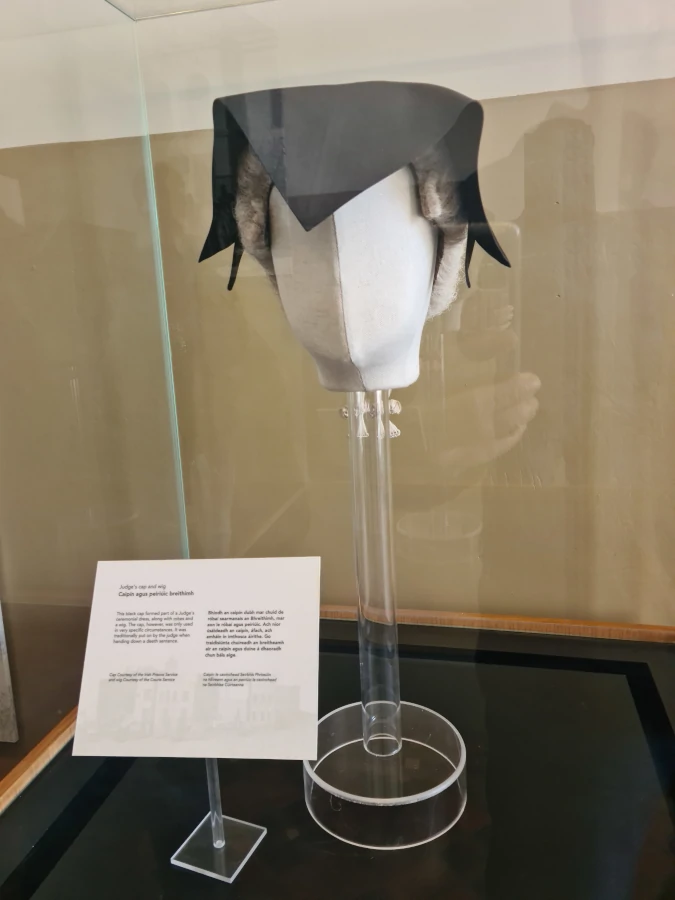
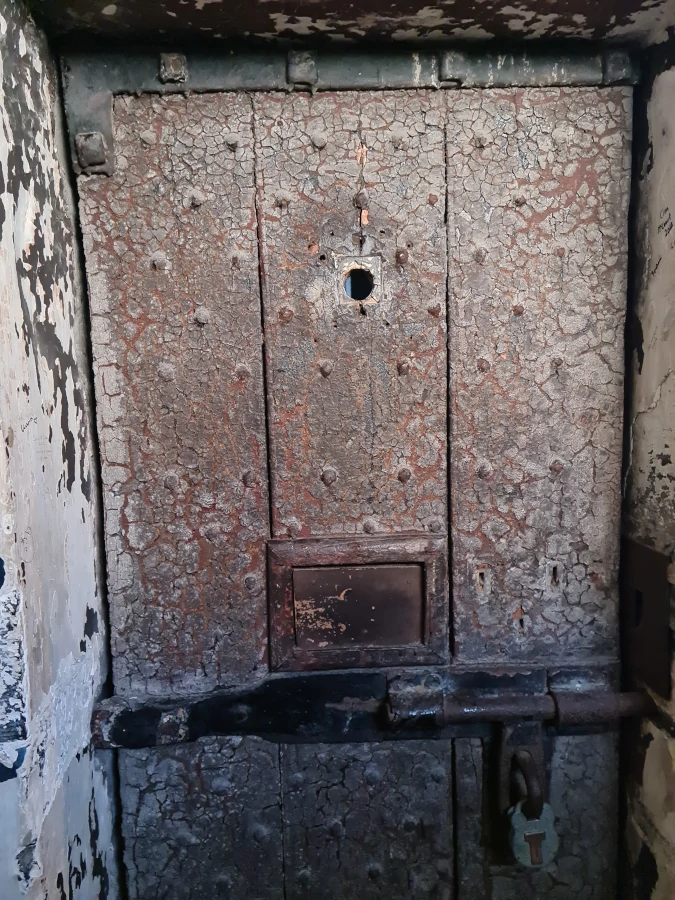
The iron cell door with its characteristic peephole is still preserved. This door reflects the austerity and strictness of the prison system of the time, where women, men, and juvenile prisoners were confined in very limited spaces and constantly monitored.
If you arrive early for your visit to Kilmainham Gaol, a great option is to explore the surrounding area. Just a short walk away is the Irish Museum of Modern Art (IMMA), whose gardens are perfect for a quiet stroll.
We walked along the IMMA Garden Walk, a peaceful path that runs through what used to be the old St. Maighnean Monastery. The setting is open, calm, and ideal for relaxing or stretching your legs before diving into the powerful history of the former prison.
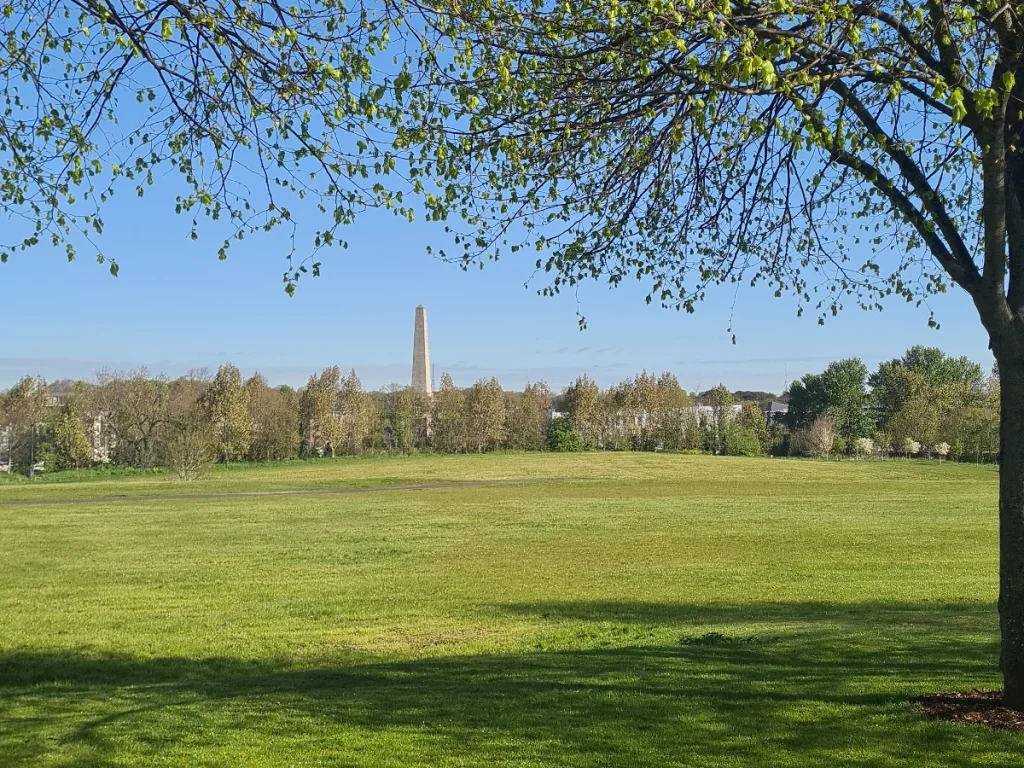
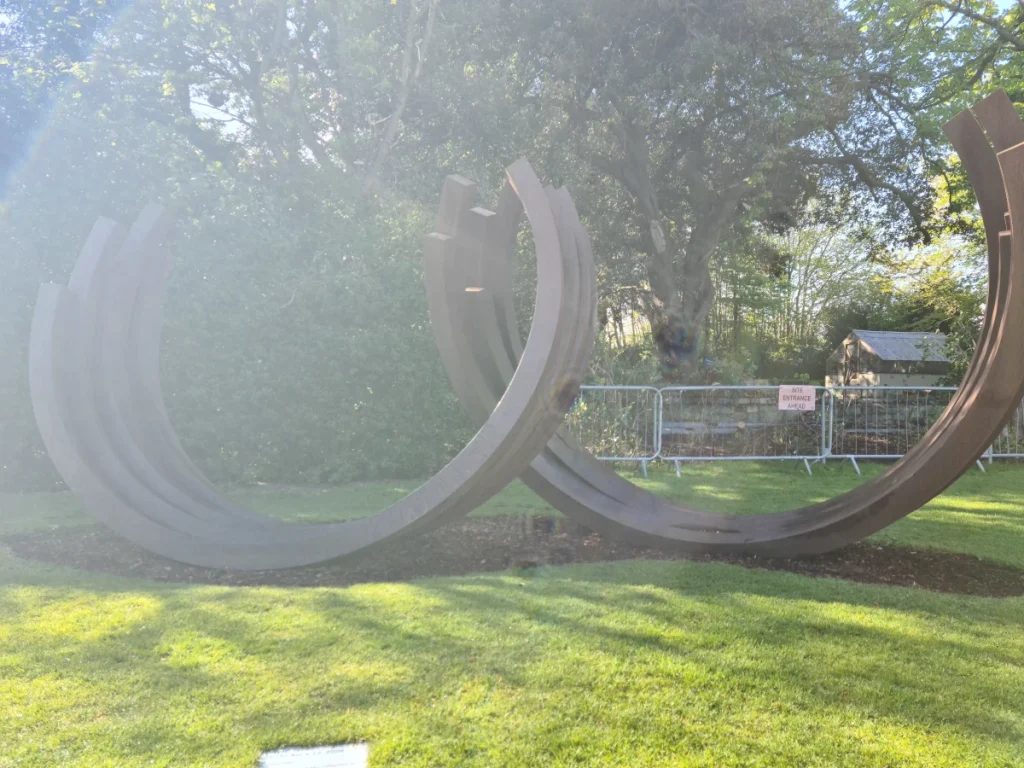
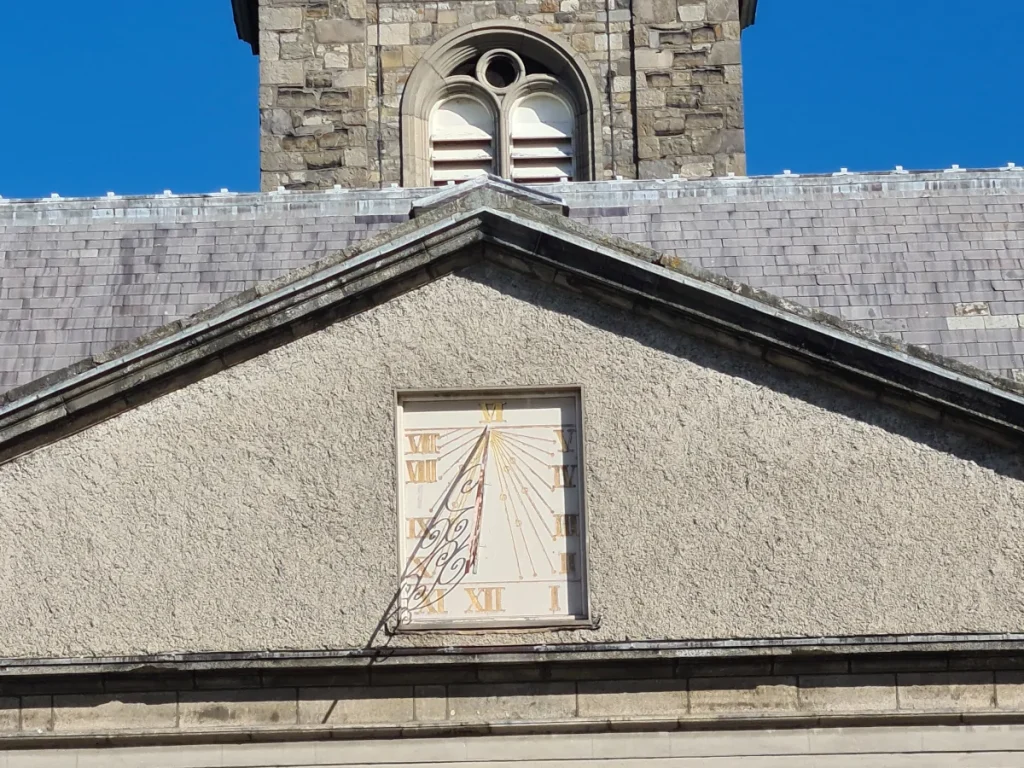
Yes, it is a must-see attraction in Dublin. Our experience at Kilmainham Gaol was, without exaggeration, one of the most moving parts of our entire trip. Our guide was exceptional: he shared every story with passion, emotion, and deep respect.
This historic prison tells the modern history of Ireland: men, women, boys, and girls were incarcerated here, many for political reasons. The visit is emotionally powerful but also deeply educational.
While it might seem like a difficult place for younger children, for pre-teens and teenagers it is a very enriching experience, almost like stepping back in time. We won’t give away too much to avoid spoilers, but we can assure you it’s an impactful and unforgettable visit for the whole family.
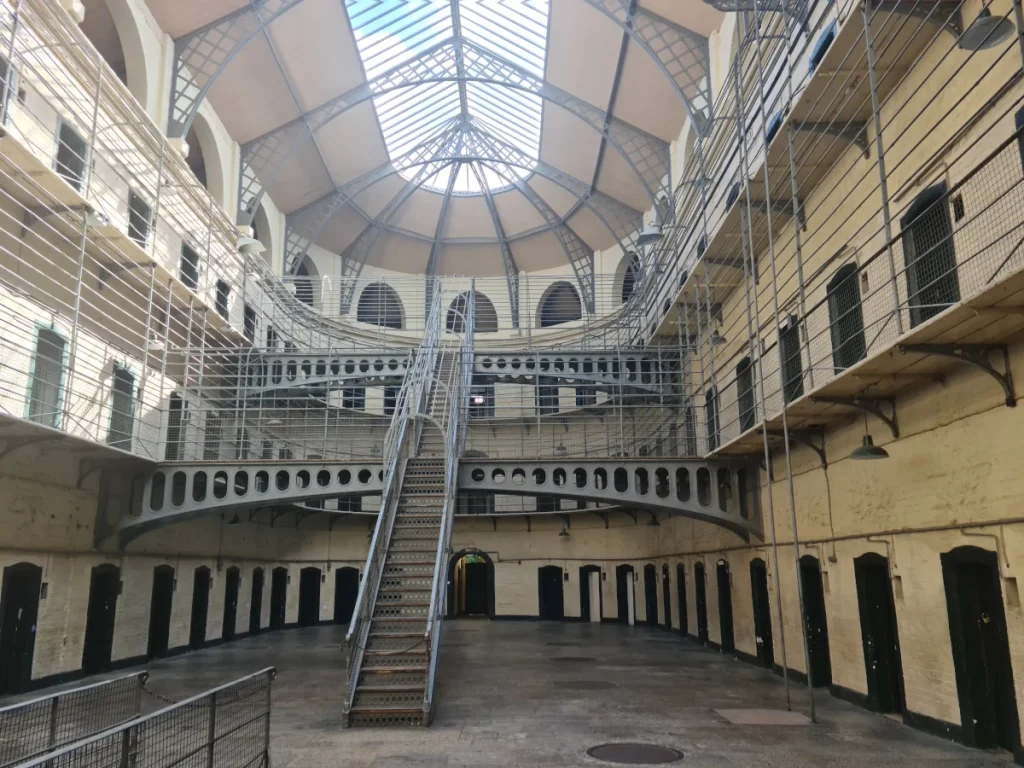
The guided tours at Kilmainham Gaol are conducted exclusively in English. Currently, there are no guides or audio tours available in other languages.
If you’re not fluent in English, it’s still possible to enjoy the visit by reading the informative panels around the site or joining a group with a bilingual member.
Make sure to book your tickets in advance here, as availability is limited.
The Brunel Building is located in the Heuston South Quarter district and stands out for its curved glass façade and contemporary design.
Although the Brunel Building is primarily a corporate office space, its striking architecture and integration within a redeveloped area filled with cafés, shops, and open spaces make it a fascinating spot for walking, photography, and understanding how Dublin is reinventing its industrial areas with a forward-looking vision.
Croppies Acre Memorial Park is located on the north bank of the River Liffey, just across the Frank Sherwin Bridge. It is a serene green space filled with symbolism, offering picturesque panoramic views of the river and city. An ideal spot for a reflective break or photography during your walk.
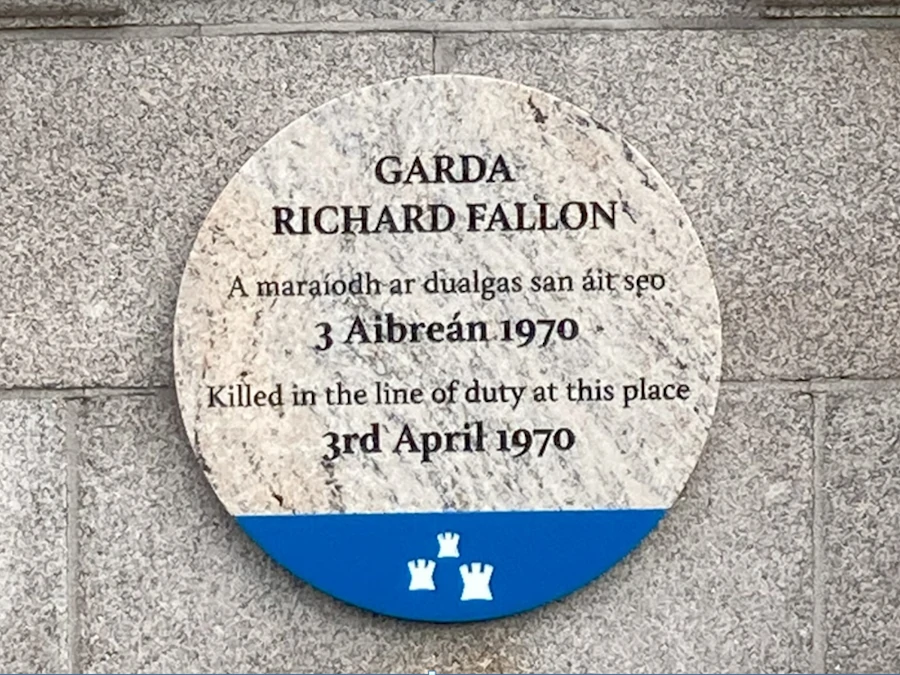
On the morning of April 3, 1970, Garda Richard Fallon was killed while trying to stop armed robbers during a heist at the Royal Irish Bank on Arran Quay. For his bravery, he was posthumously awarded the Scott Gold Medal, the highest honor of the Garda Síochána.
Source: Garda.ie – Richard Christopher Fallon
In 2022, a memorial plaque was installed on the building where the incident took place (now called Real Nation) in tribute to his service.
📍 You can see it at 24 Arran Quay, Dublin 7.
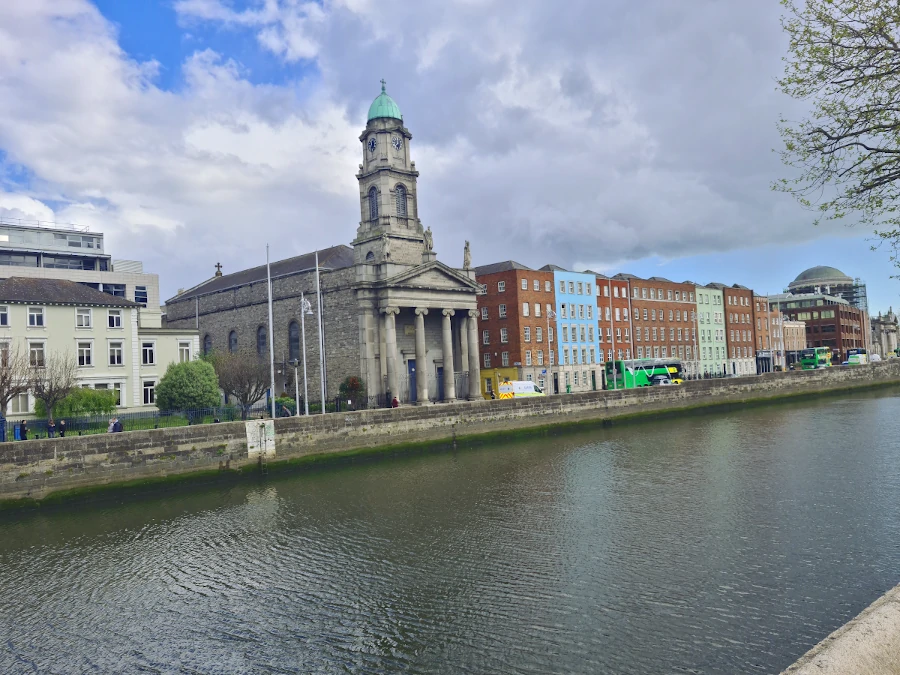
St. Paul’s is an old Catholic church building constructed in 1835, located on Arran Quay. We found its copper dome and three-stage Italian bell tower quite interesting.
This building is not to be confused with St. Paul’s Church (Church of Ireland), which is situated on North King Street, Smithfield, Dublin.
If you’re only going to visit one pub in Dublin, make it The Brazen Head, located on Bridge Street. It is considered the oldest pub in Ireland. Records show that an inn existed on this site as early as 1198, although the current building dates back to 1754. It is also mentioned in documents from 1653, highlighting its enormous historical value.
In fact, if this pub were a person, it would have the longest telomeres in all of Dublin. (If you’ve read The Saga of the Long-Lived by Eva García Sáenz de Urturi, you’ll understand the reference; if not, we highly recommend it—a fascinating take on longevity!).
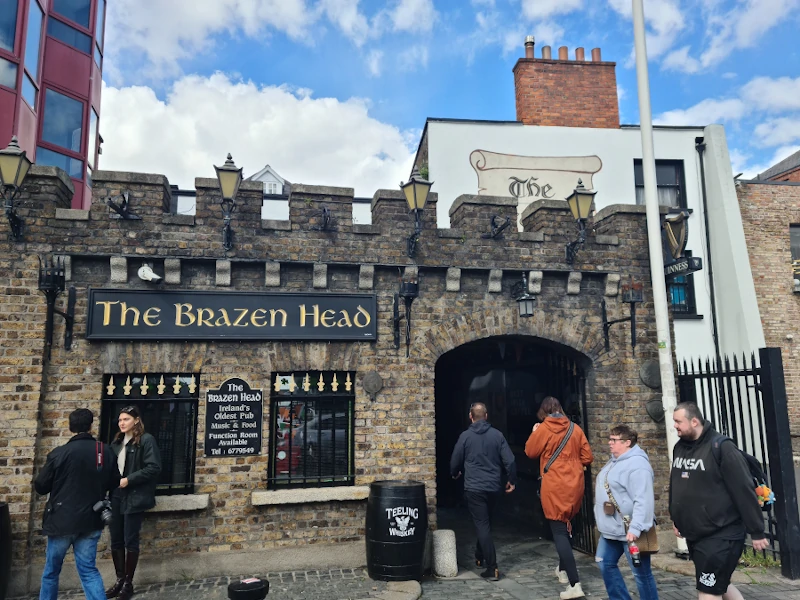
The pub maintains a traditional atmosphere, with cozy corners, live music, and a charming interior courtyard.
The Cathedral of the Holy Trinity, better known as Christ Church Cathedral, is one of the oldest and most iconic churches in Dublin.
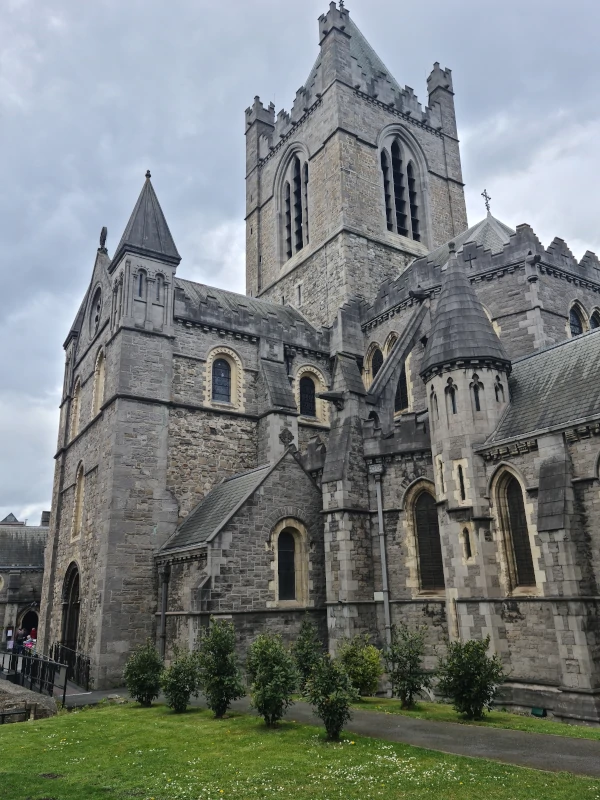
You can visit independently or with a guided tour (additional cost). Check opening hours and prices on the official website.
Outside the cathedral, there is an intriguing sound installation that lets you “listen with your bones“: you rest your elbows on the iron rail or platform and cover your ears to feel the sounds of the surroundings through your body. We didn’t hear much ourselves—maybe we did something wrong!
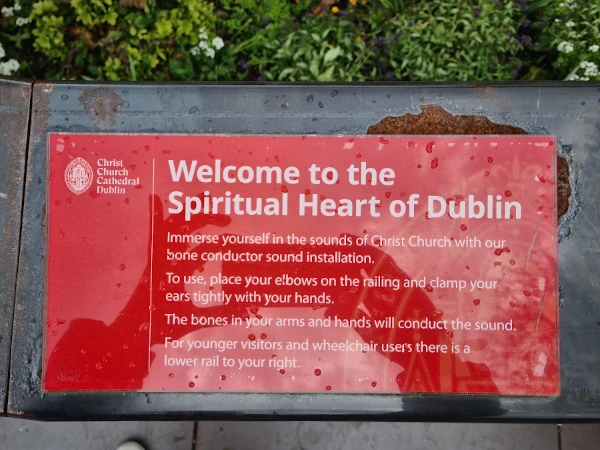
Built in the 13th century over an ancient Viking settlement, the Dublin Castle served for centuries as the center of English and British power in Ireland. Since 1922, after independence, it has been the venue for official Irish government events and is one of the city’s main tourist attractions.
You can explore:
You can also visit for free the Garda Museum and the Chester Beatty Library, both located within the castle grounds.
How to Visit:
There are two options:
If you prefer to explore the castle externally as part of a broader Dublin tour, you can book this guided tour of the Book of Kells and Dublin Castle with a Spanish-speaking guide.
The Custom House is one of Dublin’s most famous buildings, renowned both for its rich history and its current role in the Irish government. Below, we answer some common questions that tourists and curious visitors often have about Dublin’s Custom House.
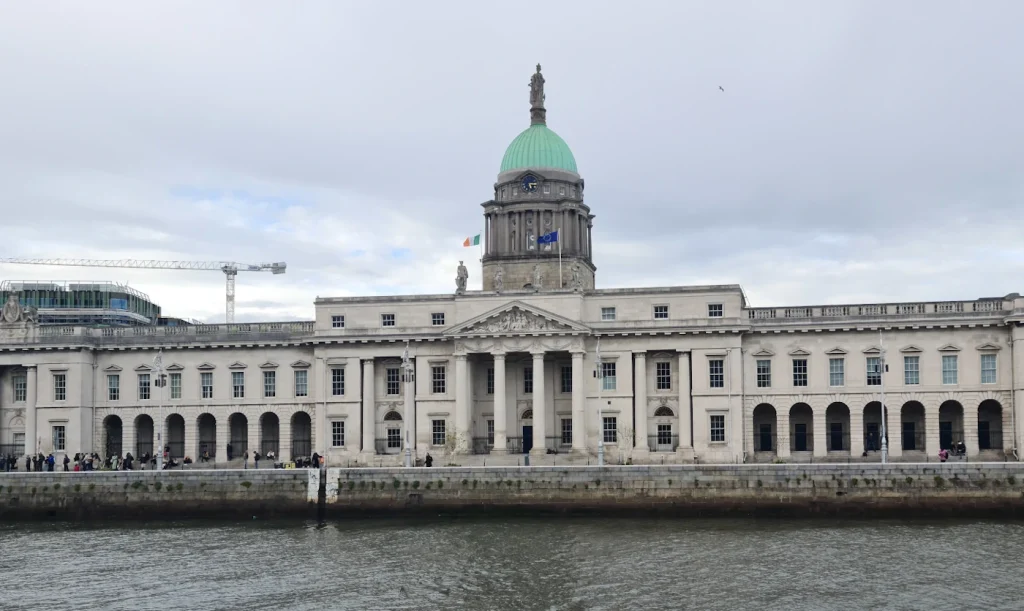
The Custom House in Dublin is a historic government building located on the banks of the River Liffey. It stands as one of Ireland’s most iconic institutional landmarks, symbolizing the country’s administrative heritage and architectural grandeur.
Currently, The Custom House serves as the headquarters for the Department of Housing, Local Government, and Heritage, which oversees housing, local government, and national heritage in Ireland.
After recharging at The Brazen Head and soaking up the atmosphere, we continued our route toward Trinity College. It was already late in the afternoon and we didn’t have tickets for the library that day, but we didn’t want to miss the chance to walk around its iconic campus.
Walking through Trinity feels like stepping into another world: historic buildings, manicured gardens, and that inspiring university vibe. We approached the entrance of the Library of the Book of Kells—just to admire it from the outside this time.
We took the opportunity to tell our teens why this place is so important: it houses an illuminated manuscript from the 9th century, created by Celtic monks, which is now a true gem of Irish heritage.
Although we didn’t go in that day, we had booked a visit for later. Spoiler: it’s totally worth it.
If you’re planning your trip, here’s a great option that combines the library visit with other key sights in the city:
We arrived around 6:30 PM, which in April is the perfect time—just when the lights start to glow and the unique atmosphere of Temple Bar really comes alive. It’s a striking experience for everyone, including kids.
Yes, Temple Bar is worth visiting with children, especially to walk around, enjoy the street performers, and take in the lively vibe. However, if your plan is to go inside a pub for dinner, pints, or live music, it’s better suited for adults. Most pubs won’t allow small children inside during evening hours.
Aside from the pubs, one of the classic things to do is to take a photo next to the Molly Malone statue, a popular stop for families and tourists alike.
These are a few of the iconic pubs that really caught our eye:
If you’re walking through Temple Bar and hear a fiddle or a lively guitar, it’s probably coming from The Temple Bar Pub. We stumbled in one afternoon without planning it—and found ourselves in the middle of a live Irish music session. The atmosphere, the energy, and the crowd made it one of the highlights of our day. No need to wait for a weekend: there’s music almost every hour!
If you’re visiting Dublin with kids or teenagers, you’ll probably spot the statue of a woman pushing a seafood cart near Grafton Street. That’s Molly Malone, a legendary figure so famous she even has her own song — Cockles and Mussels — often considered the city’s unofficial anthem. But…
When we reached the statue, my kids asked me: “Who’s that?” Honestly, I wasn’t sure myself. So we did a bit of research… and discovered all kinds of theories. Some funny, some mysterious. Here’s what we found out.
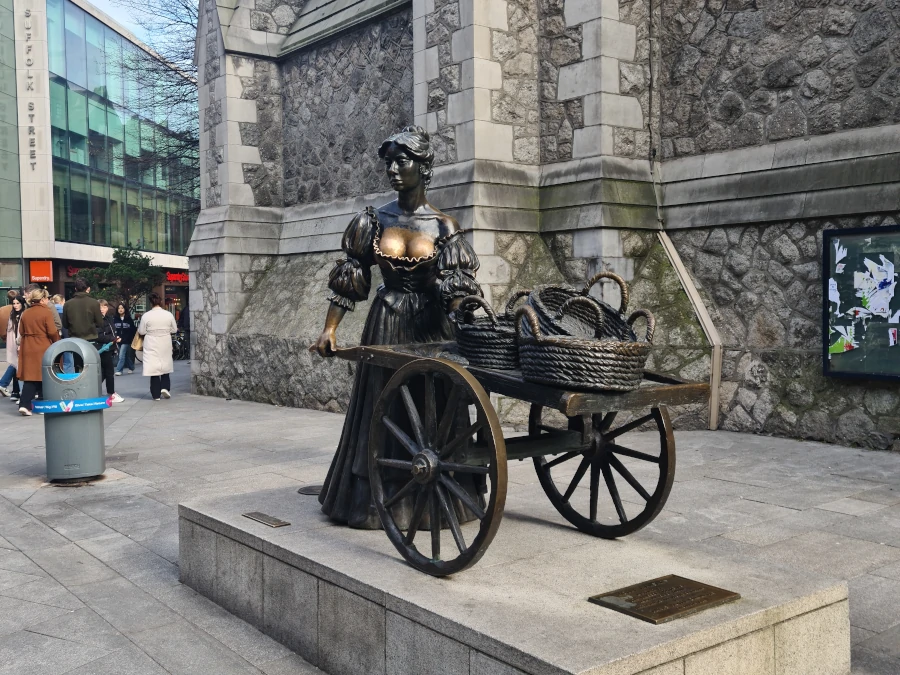
This is the most romantic theory: Molly was said to be a young street vendor selling cockles and mussels in 17th-century Dublin. She reportedly died young from illness. A church record from 1699 mentions a “Mary Malone,” but there’s no solid proof she was the same person. The legend gained popularity in 1988 during Dublin’s Millennium celebrations, when June 13 was officially declared “Molly Malone Day” based on that historical mention.
The original lyrics hint that “by day she sold fish, by night something else…”. Some believe “Molly Malone” was a common nickname for sex workers in old Dublin. While there’s no official confirmation, it’s a widely accepted theory. Today, Molly is often seen as a symbol of hardworking and resilient women from that era.
The most widely supported theory among historians and scholars is that Molly Malone never existed. The song first appeared in Boston in 1876 and later in London in 1884, written by James Yorkston in a music hall style. There are no earlier mentions in traditional Irish folk songs. Some even suggest it may have been intended as a satire of the Irish.
✅ Conclusion:
There’s no clear evidence that Molly Malone was a real person in 17th-century Dublin.
Her story blends history, urban legend, and cultural marketing.
What’s certain is that the 1988 statue, the famous song, and the folklore around her have turned Molly into a must-see stop for anyone visiting Dublin.
The Molly Malone song is a famous traditional Irish ballad, also known as “Cockles and Mussels”. It’s widely considered the unofficial anthem of Dublin, often sung at sports events, schools, and even in local pubs. The lyrics are simple, catchy, and a bit melancholic.
Below you’ll find the original lyrics in English along with a video version performed by The Dubliners.
In Dublin’s fair city
Where the girls are so pretty
I first set my eyes on sweet Molly Malone
As she wheeled her wheelbarrow
Through the streets, broad and narrow
Crying, “Cockles and mussels, alive, alive, oh”
Alive, alive, oh
Alive, alive, oh
Crying, “Cockles and mussels, alive, alive, oh”
She was a fishmonger
And sure it was no wonder
For so were her father and mother before
And they wheeled their barrow
Through the streets, broad and narrow
Crying, “Cockles and mussels, alive, alive, oh”
Alive, alive, oh
Alive, alive, oh
Crying, “Cockles and mussels, alive, alive, oh”
She died of a fever
And sure, no one could save her
And that was the end of sweet Molly Malone
Now her ghost wheels, her barrow
Through the streets, broad and narrow
Crying, “Cockles and mussels, alive, alive, oh”
Alive, alive, oh
Alive, alive, oh
Crying, “Cockles and mussels, alive, alive, oh”
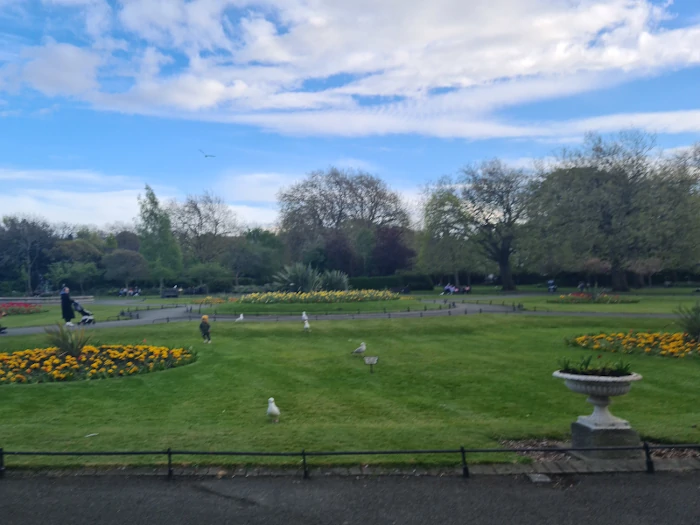
The park is very well maintained, with walking paths in all directions, a small lake, historical monuments, and even a postcard-worthy stone bridge.
We took some photos, let the teens stretch their legs freely, and enjoyed the calm vibe. Even if parks aren’t your thing, this one is a pleasant spot to unwind without rushing.
After our stroll through St. Stephen’s Green, we exited through the park’s northern gate and walked straight into Grafton Street—Dublin’s most iconic shopping street. It’s full of energy: street performers, eye-catching window displays, ice cream stands, clothing stores, and of course, that moment when someone in the family just needs to buy “something”.
In our case, we browsed a few stores without going overboard—some souvenirs, a bit of clothing, and, naturally, a couple of sweet cravings. We also stopped at one of the Butler’s Chocolate Café shops, an Irish chocolate brand we definitely recommend if you’ve got a sweet tooth. We ordered some hot chocolates and picked up a few bars to go. Absolutely delicious!
On our second day in Dublin, we decided to escape the city buzz and breathe some fresh air in one of the most beautiful and easy-to-reach spots nearby: Howth, a charming seaside village that’s perfect for a day trip with teenagers.
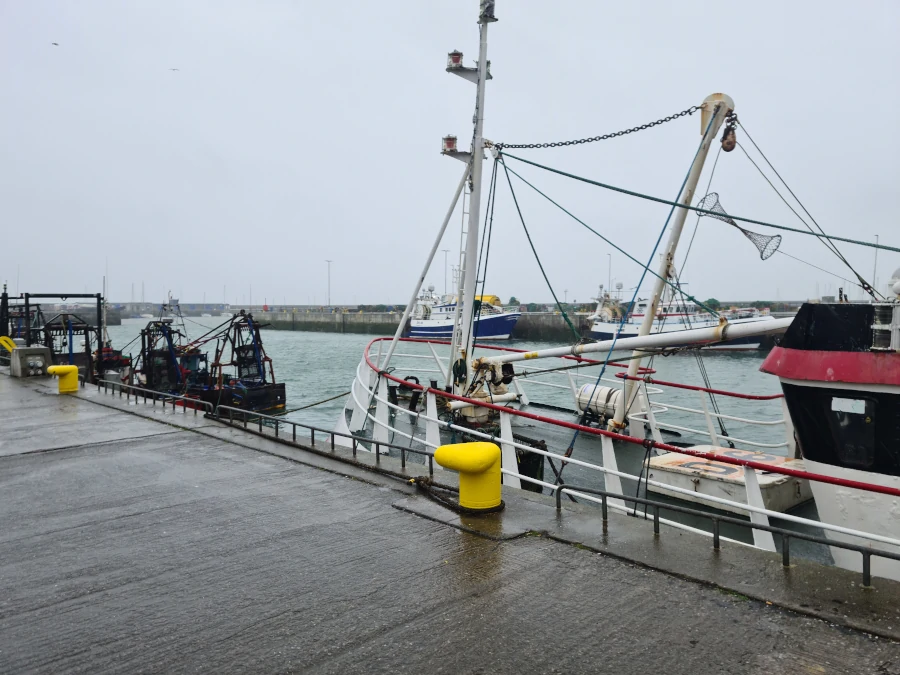
The best way to get to Howth is by taking the DART train, a coastal commuter line that connects Dublin with seaside towns like Howth and Bray.
From the city centre, the ride takes around 30 minutes and it’s quite affordable. For our family of four (two adults and two kids), a round trip cost us just €14.
We left early from our hotel — the Premier Inn Dublin City Centre (Gloucester Street South) — and walked about 10 minutes to Connolly Station. There, we bought 4 return tickets (2 adults + 2 child fares — in Dublin, under-18s get a reduced fare).

Everything at the station was clearly signposted, and even travelling as a family felt easy. We had a small question at the platform, and the staff were super friendly and helpful. Overall, a smooth and family-friendly experience that we definitely recommend.
Howth is only 30 minutes from Dublin and makes a refreshing escape without the long travel times most day‑trips demand (>3 hours each way). Still, check the forecast first: strong storms can limit what you’ll enjoy.
A severe storm forced us to head back by mid‑morning, yet we still spotted seals near the harbour, walked part of the cliffs, and explored the village streets.
Sunny day ✓ fantastic · Light rain ✓ doable · Storm ⚠ better skip
Yes. You can’t enter the lighthouse, but reaching the viewpoints is half the fun. The trail is part of the Cliff Walk: some narrow stretches, yet easier variants suit energetic kids and teens.
Howth offers big coastal pay‑off with minimal travel from Dublin. Plan around the weather, wear good shoes, and you’ll collect some of the trip’s best family memories.
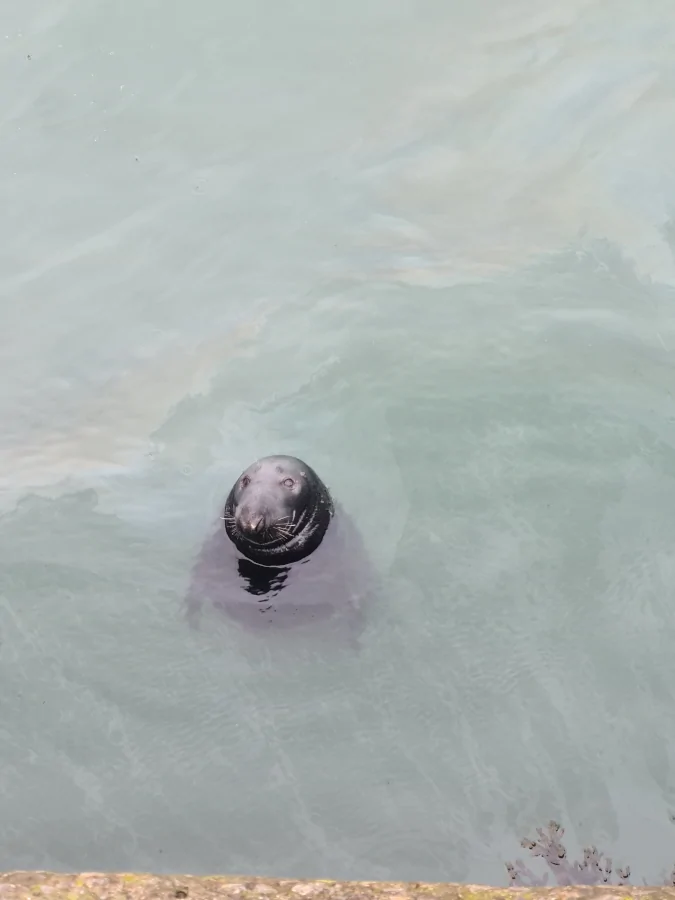
In the afternoon, after returning from Howth and taking a short break at the hotel, we headed out to explore a less touristy part of the city that ended up being a pleasant surprise: Dublin’s Docklands.
The Docklands are a revitalized area along the River Liffey that blend industrial history with modern architecture and a calm, youthful atmosphere. Once the city’s old shipping docks, the neighborhood is now full of sleek office buildings, modern apartments, stylish cafés, quirky pedestrian bridges, and riverside walkways.
It’s the perfect spot for a relaxed afternoon stroll—especially if your day trip didn’t go as planned or if you’re simply looking for something different from Dublin’s historic city center.
In the Docklands area, modern skyscrapers blend with designer bridges and repurposed industrial buildings. We strolled across the Samuel Beckett Bridge (the harp-shaped bridge), admired street art, and discovered interesting spots. While it’s not the most monumental part of the city, it definitely has a youthful and unique vibe. It’s perfect for a relaxed walk, and teenagers may find this side of Dublin especially intriguing because of its distinctive atmosphere.
Yes, if you have time. It’s not a must-see, but after a busy day or when the weather isn’t cooperating, strolling through the Docklands can be a great way to stretch your legs without stress. There isn’t much “to do,” but there’s plenty “to see.”
If you’re traveling with teenagers who’ve had enough of churches and castles, this neighborhood is a good way to show them another side of the city — modern, vibrant, and different. We really enjoyed it.
On our way to the city center, we stopped to see the famous The Spire, a nearly 400-foot-tall (120m) metal sculpture located on O’Connell Street. It’s not exactly jaw-dropping—especially if you’ve been to New York, where the skyscrapers really do leave an impression—but the story and controversy behind the Spire caught our attention. Okay, so…
Designed by Ian Ritchie Architects, the structure tapers from a wide 10.7-foot (3.27-meter) base to just 6 inches (15 centimeters) at the tip. During the day, it softly reflects the urban landscape and the people walking nearby. At night, its base lights up and the top glows like a modern lighthouse shining over the city.
The Spire was built in 2003 to mark the new millennium. Some people love it, others… not so much. For many Dubliners, it’s more of a city landmark than a “beautiful” monument. What’s interesting is how something so simple can spark such strong opinions.
The Spire of Dublin, also known as the Monument of Light, was meant to symbolize the city’s renewal and future. It was part of a project launched in the early 2000s to revitalize O’Connell Street, a central area that had been declining since the 1970s.
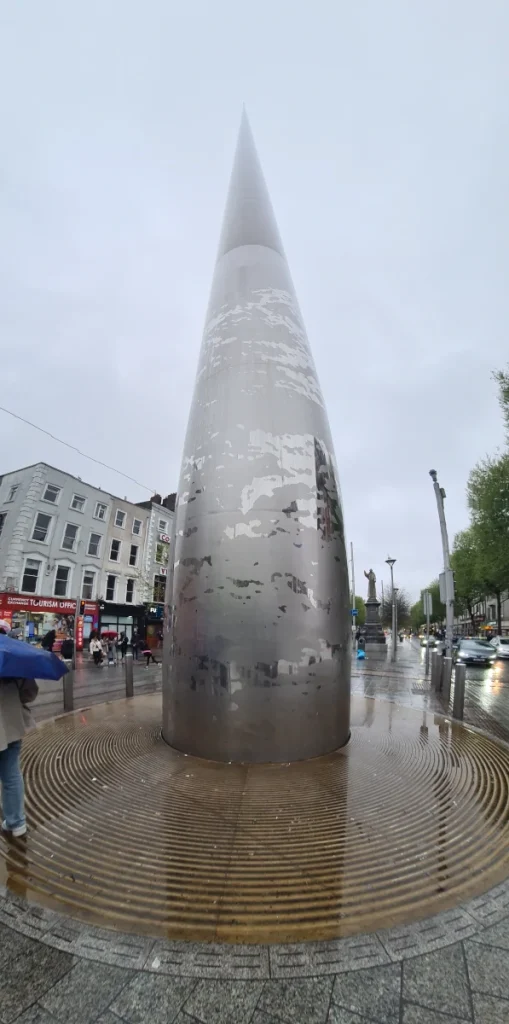
Yes, the Spire actually sways in the wind! On very blustery days, it can tilt up to 1.5 meters (about 5 feet). It was designed that way—just like lamp posts. It now stands where the old Nelson’s Pillar once stood, which was destroyed in 1966. While it stirred some debate at first, today it’s one of Dublin’s quirkiest modern symbols.
Perfect for selfies, for meeting up, or just for looking up and letting your imagination run wild.
The Dublin Portal is an interactive installation that connects Dublin live with cities like New York, Poland, Brazil, and Lithuania through a large circular screen. It allows you to see and greet people on the other side of the world in real time.
Located right next to the Spire, it’s one of Dublin’s most eye-catching new attractions.
Inaugurated in 2024, this project symbolizes global connection and cultural unity through art and technology. It has quickly become a new tourist hotspot and a symbol of closeness between cities.
For more information, visit the official site at Portals.org.
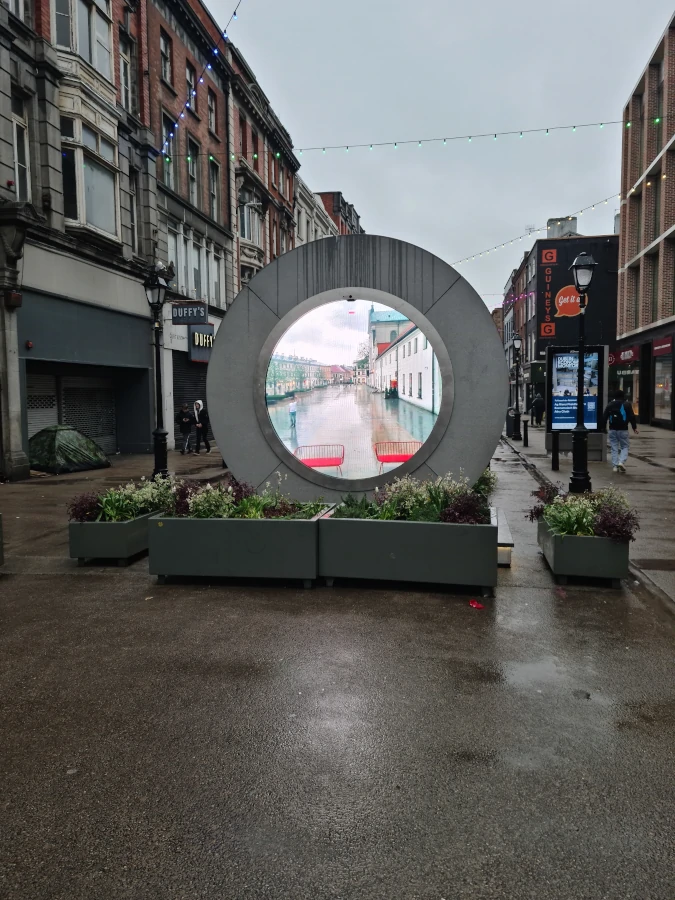
The digital portal connecting New York and Dublin in real time opened on May 8, 2024.
However, due to misuse by certain “characters,” it was temporarily closed just six days later, on May 14, 2024. The reason? Lewd and obscene behavior on both the New York and Dublin sides.
After implementing new security measures—like automatic camera blurring when obstructed and enhanced physical barriers—the Portal reopened on May 19, 2024.
Source: El País
The way we use public and private spaces defines us as a society. We must use them responsibly so that tomorrow we find the city we deserve.
After visiting the Dublin Portal, we took advantage of being nearby to make a quick stop at the ILAC Shopping Centre.
It wasn’t our main plan, but just 20 minutes was enough to stroll through some shops, browse around, and take a break from walking.
If you’re traveling with family, this shopping center can be a practical option to recharge, buy anything you might need, or simply take shelter if the weather isn’t great.
On the morning of day 3, we planned to visit the famous Guinness Storehouse, but we got delayed buying tickets and, as often happens in such popular places, we ended up without a spot. We couldn’t experience it from the inside, so we won’t pretend to. But we did learn an important lesson we want to share: you need to book well in advance, whether you’re traveling with kids or not.
👉 Tickets for Guinness Storehouse
In our opinion, yes. Walking around the outside of the brewery has its charm: the surroundings are different from purely touristy spots, with a very photogenic industrial vibe. Seeing the organization of the line (which was endless!) also gives an idea of how popular the place is. We asked if there were any last-minute spots, but they kindly told us that everything was fully booked.
So no, we didn’t go in. But at least we got a nice walk, some interesting photos, and a key tip for those preparing their trip: book early or you might get left out, just like us.
Near the Guinness Storehouse, you’ll find John’s Lane Church.
Location: Thomas Street, Dublin
This 19th-century Catholic church, built by the Order of St. Augustine, is one of Dublin’s notable examples of neo-Gothic architecture. Its nearly 60-meter tower and colorful stained glass windows stand out beautifully. Although we couldn’t visit inside as it was closed, the exterior alone is worth a quick look if you’re nearby.
Phoenix Park is one of the largest urban parks in Europe, covering around 700 hectares (7 km²).
Here are a few ideas for enjoying Phoenix Park with your children or teenagers.
One of the highlights of Phoenix Park is seeing wild deer in their natural habitat. You’ll often spot them near the Papal Cross, especially in the morning. Don’t feed them or get too close—but just watching them is enough to amaze young kids and get teens snapping loads of photos.
The park’s size makes it perfect for cycling. There are safe lanes and plenty of space to ride stress-free. You can rent bikes inside the park or nearby. Kids love it, and for teens it’s an active, different kind of plan.
Phoenix Park has several 🏛️interesting landmarks worth checking out on a light, family-friendly visit. Here are the main ones:
Eating well in Dublin with teenagers wasn’t hard at all. Here are a few places where we stopped for lunch, dinner or just a quick bite during our walks around the city. All of them were comfortable for families, had options for different tastes and no unnecessary fuss.
This chain specializes in smoothies and açaí fruit bowls — perfect for a quick and healthy snack, especially when traveling with teens. A delicious way to recharge without turning to sugary pastries or junk food.
📍 Location: 10 Anne St S, Dublin 2, D02 RX28, Ireland
You can customize your bowl with fresh fruit, granola, peanut butter… and everything is prepared right in front of you!
Honestly, it’s hard to describe just how good it was — kind of like enjoying rich chocolate, but much healthier. A real win when you’re traveling with kids, don’t you think?
Located in the Temple Bar area, right by the River Liffey, Milano is a relaxed and cozy Italian restaurant. The pizza and lasagna were absolutely delicious.
We had dinner here and really enjoyed the whole experience.
📍 Location: 19 Essex St E, Temple Bar, Dublin, D02 HW84, Ireland
📞 Phone: +353 1 670 3384
Nando’s is a South African chain famous for its flame-grilled chicken with PERi-PERi sauce, a spicy mix of African chilies and Portuguese spices.
We ordered a burger and chicken wrap — of course with PERi-PERi — and left very happy. Plus, the place wasn’t too crowded, which was a bonus.
📍 Location: 12 St Andrew’s St, Dublin 2, D02 ER83, Ireland
We had dinner here on our first night in Dublin. O’Neill’s Pub is a traditional spot where the Irish stew was truly amazing. Like many pubs in Dublin, it gets quite busy, but we managed to find a table for the four of us by arriving early, around 8 PM.
It’s located right next to the Molly Malone statue in the heart of the city.
📍 Location: Temple Bar, beside the Molly Malone statue
Perfect for a family dinner with teens if you’re looking for a traditional Irish experience without leaving the city centre.

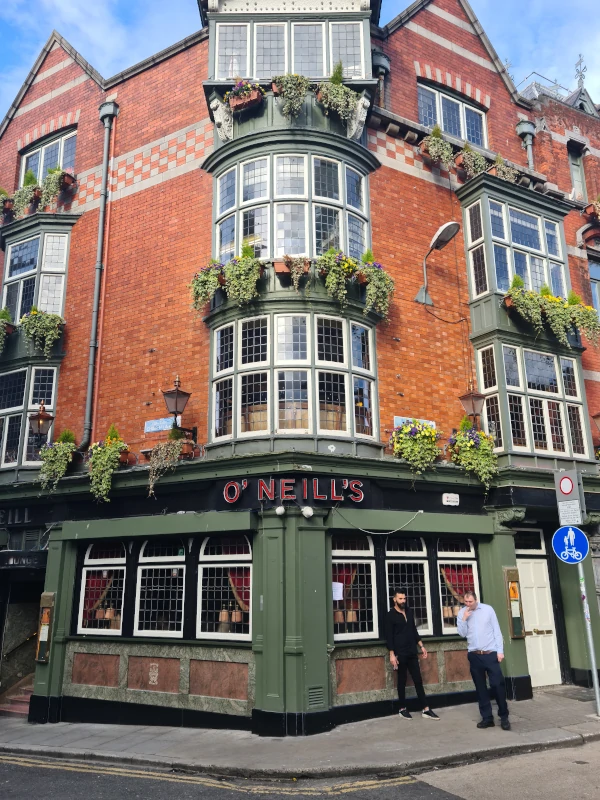
During our walk through Dublin, we quickly realised how full of street art the city is.
Murals, graffiti, and creative pieces bring colour and personality to walls all across the neighbourhoods we explored —
giving each area its own vibrant and unique character.
Here are some of the artworks we came across along the way:
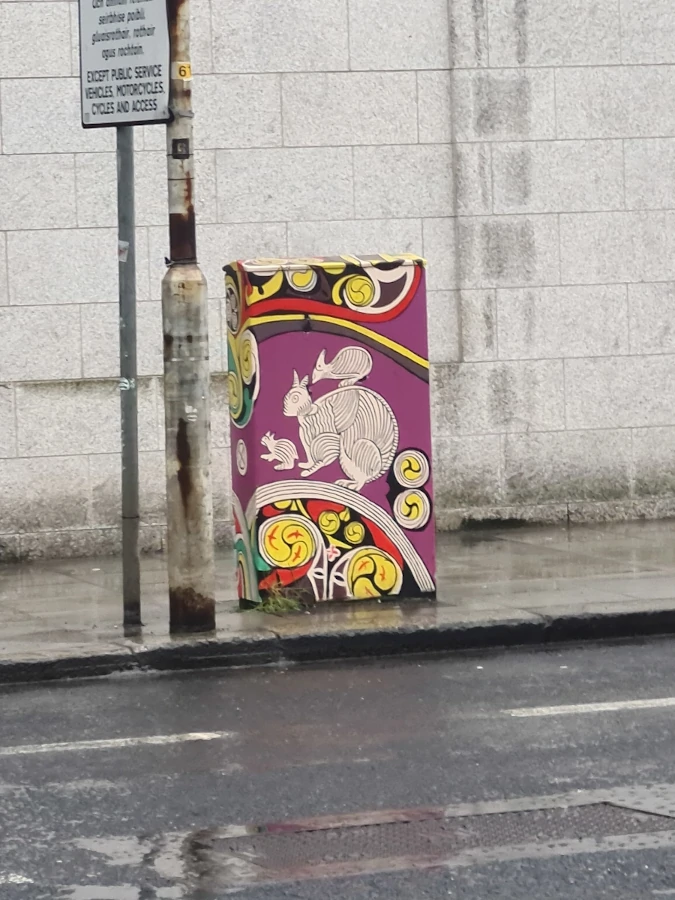
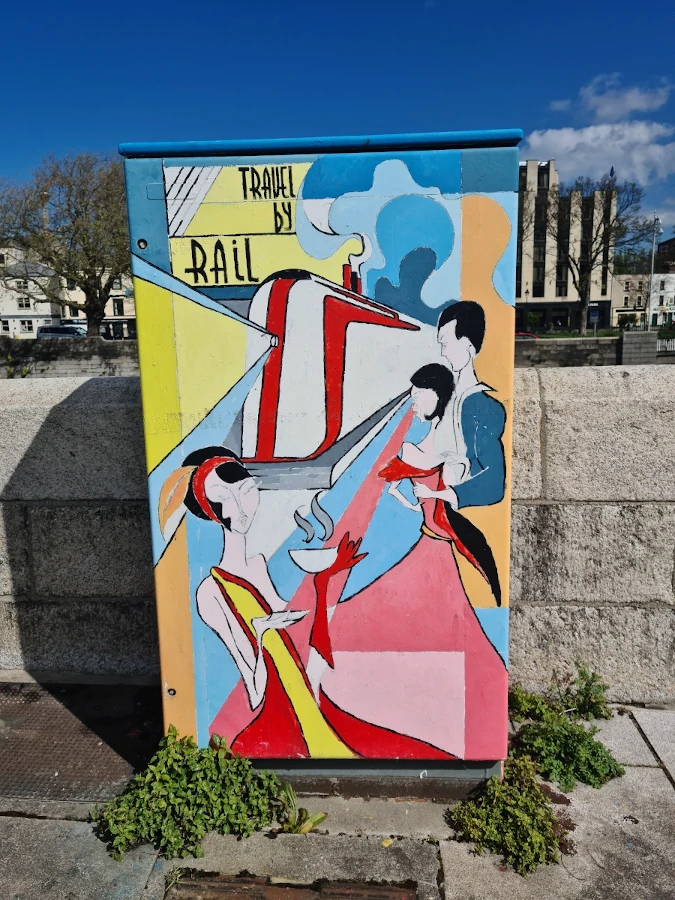
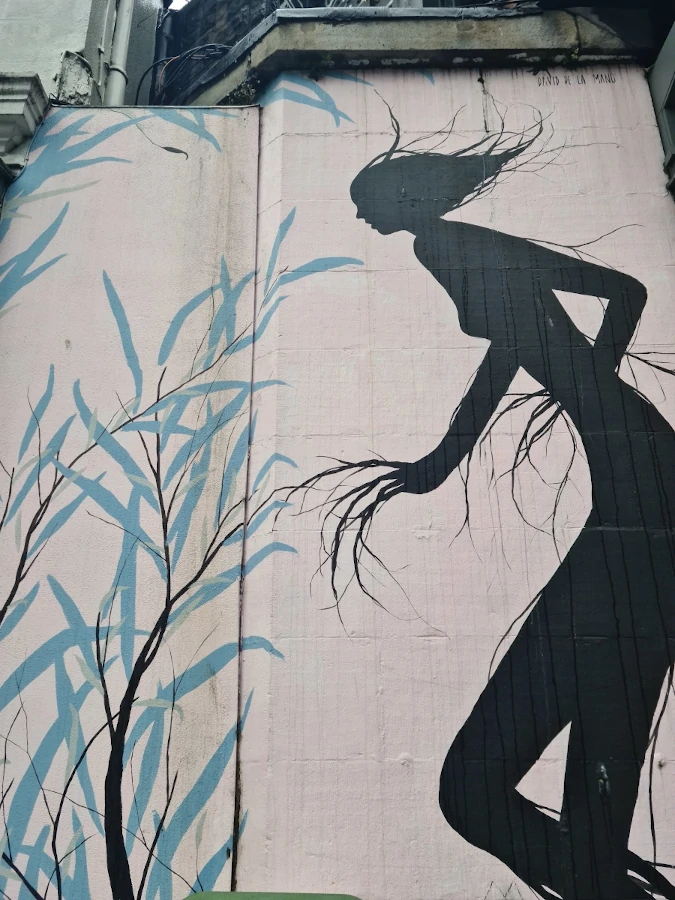
We spotted most of them near the Frank Sheehy Skeffington Bridge, built in 1982.
It’s a simple and functional bridge — but it stands out in the area thanks to the nearby street art.
Just around the corner, we found another bridge that instantly reminded us of
Santiago Calatrava’s architectural style — very similar to the famous bridge in Bilbao —
with modern lines and elegant curves that contrast beautifully with Dublin’s historic surroundings.
This contrast between old and new is something we noticed not only in the city’s buildings but also in its street art.
Many of the murals blend historical references with modern messages,
turning a walk through Dublin into a colourful, cultural, and visual experience.